Afghanistan
Welcome to Afghanistan
Afghanistan, a land of rugged mountains, ancient history, and rich cultural heritage, is gradually re-emerging as a destination for adventurous travelers in 2025. Despite decades of conflict, the country offers unique experiences for those willing to explore its breathtaking landscapes, historic sites, and vibrant bazaars. With careful planning and respect for local customs, visitors can discover a side of Afghanistan few outsiders have seen.
Afghanistan is located at the crossroads of Central and South Asia, featuring diverse geography that ranges from arid deserts to towering mountain ranges like the Hindu Kush. The country’s history spans millennia, with influences from Buddhist, Islamic, Persian, and Mongol civilizations visible in its architecture and cultural traditions. Cities like Kabul, Herat, Mazar-i-Sharif, and Bamyan showcase a blend of ancient heritage and contemporary Afghan life. Since the Taliban regained control in 2021, the security situation has stabilized in many regions, encouraging a cautious but growing influx of tourists. The Taliban government is promoting tourism as a way to generate foreign currency and improve the country’s international image. However, visitors must remain vigilant and travel with local guides to navigate the complex security landscape safely.
1.
Unparalleled Cultural Heritage: Afghanistan is home to some of the world’s most remarkable historical sites, including the ancient Buddhist statues of Bamyan, the Minaret of Jam, and the stunning mosques of Herat and Mazar-i-Sharif. These sites offer a glimpse into the country’s rich tapestry of civilizations and religious traditions.

2.
Stunning Natural Landscapes: From the remote Wakhan Corridor in the northeast, ideal for trekking and wildlife spotting, to the dramatic mountain vistas around Bamyan, Afghanistan’s natural beauty is both pristine and awe-inspiring. The country’s varied terrain provides opportunities for hiking, photography, and experiencing traditional rural life.
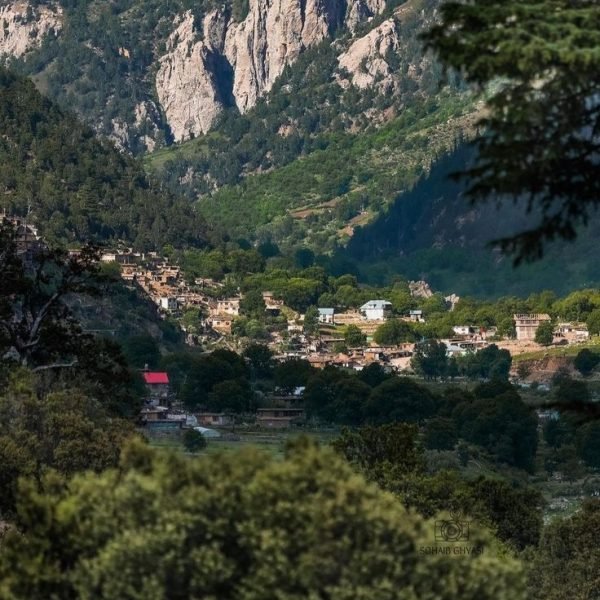
Planning Your Trip
Visa Information
All foreign nationals require a visa to enter Afghanistan. Visa applications must be made in person at an Afghan consulate or embassy, with most tourist visas issued for single entries valid up to one month. For longer stays or business purposes, extended or multiple-entry visas may be available upon request through the Ministry of Foreign Affairs in Kabul. Applicants need a valid passport with at least six months’ validity, completed application forms, passport photos, and sometimes letters of introduction or proof of employment depending on the visa type. It is essential to schedule an appointment in advance and comply with all consular requirements to avoid delays or refusals.
Best Time to Visit
The optimal months to visit Afghanistan are May and September, when the weather is most pleasant. During these months, daytime temperatures range between 22°C and 30°C, with clear skies and ample sunshine, making it ideal for sightseeing and outdoor activities. Spring and autumn offer comfortable temperatures across most regions, while summer can be extremely hot, especially in cities like Kandahar and Herat, where temperatures may exceed 40°C. Winter brings snow and freezing temperatures, particularly in mountainous areas like Bamyan and the Wakhan Corridor, which can be beautiful but challenging for travel.
Getting To and Around
International flights to Kabul have resumed, with Turkish Airlines and several UAE-based carriers operating routes into the country. Travelers should book flights well in advance and prepare for possible delays or changes. Once in Afghanistan, domestic travel options include local airlines such as Kam Air and Ariana, though flight schedules can be unreliable and often route through Kabul.
Overland travel is possible via a network of buses, minibuses, and shared taxis connecting major cities and towns. While these options are budget-friendly, they require flexibility and patience due to road conditions and security checkpoints. Hiring local guides or joining organized tours is highly recommended to ensure safety and smooth navigation.
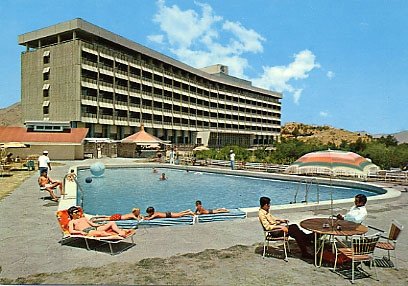
Accommodation
Travelers to Afghanistan in 2025 will find a range of accommodation options, primarily concentrated in major cities such as Kabul, Herat, Kandahar, and Mazar-i-Sharif. While the hospitality infrastructure is still developing due to the country’s complex recent history, there are comfortable and secure places to stay that cater to different budgets and preferences.
Accommodation Options
In Kabul, budget-friendly hotels are available that provide essential amenities such as clean rooms, heating, and halal breakfast options. These hotels often include facilities like gardens, shared lounges, and in-house restaurants, creating a welcoming atmosphere for travelers. For example, the Khyber Hotel is well-regarded for its comfortable rooms, modest breakfast including coffee (which is somewhat unusual in Afghanistan), good heating, and helpful English-speaking staff. It also offers free WiFi and a secure environment, which is a priority for many visitors. Other hotels in Kabul range from modest guesthouses to more luxurious establishments with amenities like swimming pools and stylish décor, catering to those who prefer more comfort and relaxation during their stay.
Outside Kabul, cities like Kandahar offer notable hotels such as the Royal Afghan Hotel, which boasts high-quality furniture, professional and friendly staff, beautiful gardens, and reliable WiFi. Security is a key concern in Afghanistan, and many hotels maintain armed security at entrances to ensure guest safety, which is reassuring for international visitors.
Guesthouses also provide a more local and intimate experience, often with large, comfortable rooms and private baths. These smaller accommodations tend to be clean, secure, and staffed by friendly locals who can offer insights into Afghan culture and travel tips.
Travelers should book accommodations in advance, especially in peak travel months (May and September), and always confirm security arrangements. Staying in well-reviewed hotels or guesthouses known for their safety and hospitality is advisable. Many hotels include breakfast, often featuring traditional Afghan dishes, which is convenient for travelers starting their day of exploration.
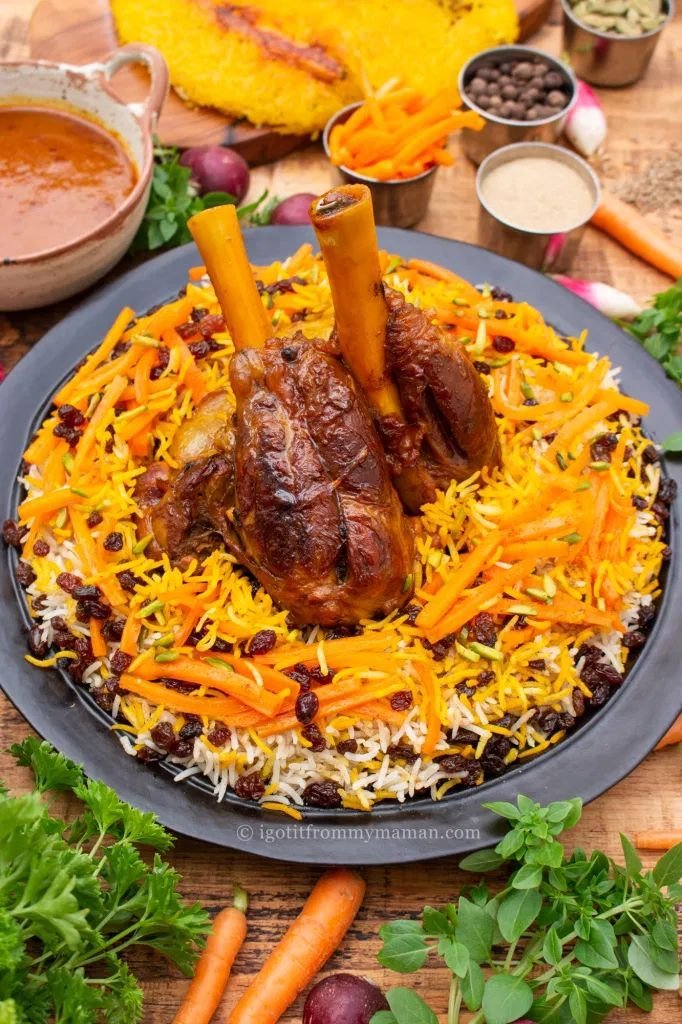
Food and Drink
Afghan cuisine is a rich tapestry reflecting the country’s geographic and cultural diversity, influenced by Persian, Central Asian, and South Asian culinary traditions. The food is halal and centers around meats such as mutton, beef, poultry, and fish, accompanied by rice, Afghan bread (naan), vegetables, and dairy products like yogurt and milk.
The national dish, Kabuli Pulao, is a fragrant rice dish cooked with lamb or beef, raisins, carrots, and nuts. It is a staple at family gatherings and special occasions, embodying the essence of Afghan hospitality and culinary art. Rice dishes are central to most meals, often served with meat stews or kebabs.
Kebabs are among the most popular and widely available foods, usually made from lamb or beef. Afghan kebabs are typically served with naan bread rather than rice and can be seasoned with spices such as sumac or ghora (dried sour grape powder) to enhance flavor. Varieties include lamb chops, ribs, kofta (ground beef meatballs), and chicken kebabs. The eastern Afghan specialty, Chapli Kebab, is a spiced minced beef patty served flat and round, often eaten with naan.
Another beloved dish is Bolani, a stuffed fried flatbread filled with ingredients like potatoes, pumpkin, lentils, or chives. It is commonly served as a side dish or appetizer, often accompanied by a cilantro-based dipping sauce.
Chicken dishes, known locally as murgh-e, are prepared with cream, butter, and curd, offering a rich and creamy flavor profile distinct from neighboring cuisines. These dishes can be found both in restaurants and street stalls.
Vegetarian options include dishes like Boorani Kadoo, where pumpkin or squash is cooked slowly with garlic, coriander, ginger, turmeric, and chili peppers, often served with garlic-spiked yogurt and naan.
Afghan bread, or naan, is a staple that accompanies almost every meal. It is used to scoop up food and soak up sauces, reflecting the communal and hands-on style of eating.
Drinks
Tea, or chai, is the national beverage and is consumed throughout the day. Both green and black teas are popular, often served without sugar but sometimes flavored with cardamom or saffron. Sheer chai (milk tea) is enjoyed mainly in the mornings or on special occasions and resembles Kashmiri chai.
Another traditional drink is Doogh, a refreshing cold yogurt-based beverage mixed with water and mint, sometimes including cucumber. It is especially popular during the hot summer months and is commonly served with meals to aid digestion.
Eating Habits and Dining Culture
Hospitality is a cornerstone of Afghan culture, and sharing food is a significant social ritual. Guests are often offered tea and snacks upon arrival, and meals are occasions for family and community bonding. Eating with the right hand and sharing from communal plates is customary.
In urban centers like Kabul, you will find a mix of traditional Afghan restaurants and some international cuisine, reflecting the city’s cosmopolitan character. Street food stalls offer quick, flavorful options like kebabs and bolani, providing an authentic taste of local flavors.
Visitors should be aware that food hygiene standards can vary, so choosing reputable restaurants or hotels for meals is recommended. Drinking bottled water and avoiding raw vegetables or unpeeled fruits is advisable to prevent illness.
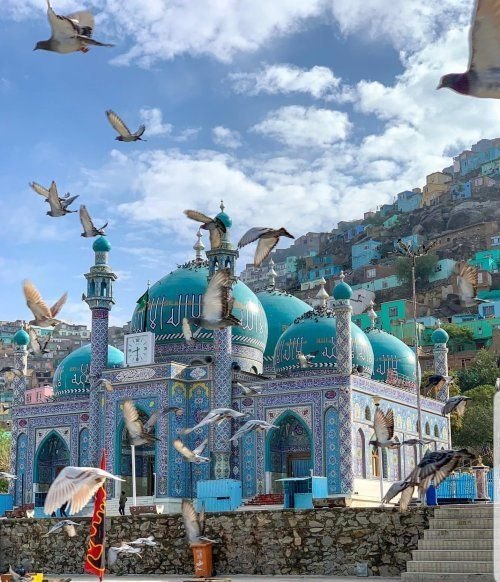
Must-See Attractions
- Babur Gardens (Bagh-e Babur), Kabul
This historic garden, designed in the Persian style by the Mughal emperor Babur in the 16th century, is one of Kabul’s most cherished green spaces. Restored after years of conflict, Babur Gardens provides a tranquil escape with beautifully landscaped terraces, fountains, and panoramic views of the city. It is a popular spot for locals and visitors alike, especially on Fridays when families gather for picnics and relaxation. - Band-e Amir National Park, Bamiyan
Afghanistan’s first national park, Band-e Amir, is a breathtaking natural wonder featuring a series of six deep blue lakes separated by natural dams made of travertine. Located in the rugged mountains near Bamiyan, the park offers pristine scenery, crystal-clear waters, and opportunities for hiking, boating, and photography. Its dramatic cliffs and serene environment make it a must-visit for nature lovers. - The Cultural Landscape and Archaeological Remains of Bamiyan Valley
Once home to two giant Buddha statues carved into cliffs, Bamiyan Valley is a UNESCO World Heritage Site that tells a poignant story of Afghanistan’s Buddhist past and the tragic destruction of these statues in 2001. Visitors can explore the niches where the Buddhas stood, ancient cave monasteries, and the ruins of Shahr-e Gholghola and Shahr-e Zuhak, historic fortresses that offer panoramic views of the valley. - The Minaret and Archaeological Remains of Jam, Ghor Province
Standing 65 meters tall, the Minaret of Jam is the second tallest minaret in the world and a masterpiece of Islamic architecture adorned with intricate blue tilework and Quranic inscriptions. Located in a remote mountainous area, it offers a glimpse into Afghanistan’s medieval glory and is a remarkable site for those interested in history and architecture. - The Blue Mosque (Shrine of Hazrat Ali), Mazar-i-Sharif
Known for its dazzling blue tilework that covers its walls and domes, the Blue Mosque is one of Afghanistan’s most iconic religious sites. Located in northern Afghanistan, it is a place of pilgrimage and cultural significance. Non-Muslim visitors are generally allowed to enter outside prayer times, offering a chance to admire its intricate artistry and spiritual atmosphere. - Herat Citadel and Great Mosque, Herat
Herat, a city with deep Persian influences, boasts the Herat Citadel, a fortress with a history spanning over two millennia, and the Great Mosque (Friday Mosque), famous for its exquisite tilework and stunning Islamic architecture. These sites reflect Herat’s historical importance as a cultural and trading hub on the Silk Road. - Panjshir Valley
Known for its lush greenery, rivers, and dramatic mountain scenery, the Panjshir Valley is a peaceful retreat for nature enthusiasts. It is also historically significant as a symbol of Afghan resistance. Visitors can enjoy hiking, fishing, and exploring traditional villages. - Kabul’s National Museum and Chicken Street
The National Museum of Afghanistan in Kabul houses priceless artifacts that narrate the country’s rich history, from ancient times through the Islamic period. Nearby, Chicken Street is famous for its bustling bazaars where travelers can shop for traditional Afghan carpets, handicrafts, and antiques.

Must-Do Activities
- Explore Kabul’s Historic and Cultural Sites
Start your Afghan adventure in Kabul by visiting Babur Gardens, the National Museum, and the Darul Aman Palace. Wander through Chicken Street to experience the vibrant market atmosphere and shop for authentic Afghan crafts. Climb Wazir Akbar Khan Hill for panoramic views of the city and the surrounding mountains. - Trekking and Nature Exploration in Bamiyan and Band-e Amir
Spend several days in Bamiyan to explore the archaeological sites and enjoy outdoor activities. Trek to the niches of the Buddhas, hike around Band-e Amir’s lakes, and take a boat ride on the turquoise waters. The surrounding mountains provide excellent opportunities for trekking and photography. - Visit the Minaret of Jam
For those seeking adventure, a visit to the Minaret of Jam involves trekking through remote terrain, offering a rewarding experience of Afghanistan’s natural beauty and historical grandeur. This journey requires careful planning and a knowledgeable local guide due to its isolated location. - Experience the Spiritual Atmosphere of the Blue Mosque
Attend a visit to the Blue Mosque in Mazar-i-Sharif to witness its stunning architecture and participate in or observe local religious practices. The mosque is especially vibrant during the annual Nowruz (Persian New Year) celebrations when the city comes alive with festivities. - Discover Herat’s Architectural Gems
Explore Herat’s citadel and the Great Mosque, and stroll through its markets to experience the city’s blend of Persian culture and Afghan hospitality. Herat’s artisans are renowned for their tilework, textiles, and calligraphy, making it a great place to appreciate traditional crafts. - Experience Afghan Hospitality in Local Villages
Afghanistan is famous for its warm and generous hospitality. Wherever you travel, accept invitations to share tea or meals with local families. These moments offer invaluable insights into Afghan culture and traditions, creating meaningful connections beyond sightseeing. - Adventure in Panjshir Valley and Badakhshan
For outdoor enthusiasts, the Panjshir Valley and the remote Badakhshan Province offer trekking, fishing, and wildlife spotting opportunities. The Wakhan Corridor in Badakhshan is a particularly spectacular area for high-altitude trekking and experiencing the traditional lifestyles of Wakhi and Kyrgyz communities. - Attend Cultural Festivals and Markets
If your visit coincides with local festivals, such as Nowruz or Eid celebrations, try to participate in the festivities. Markets across cities like Kabul, Herat, and Mazar-i-Sharif come alive with music, dance, and colorful displays of traditional dress and crafts.
Afghanistan in 2025 offers a travel experience filled with history, natural beauty, and genuine human connection. While the country requires careful preparation and respect for local customs, the rewards are immense for those who seek to explore its rich cultural heritage and stunning landscapes. From the ancient ruins of Bamiyan to the vibrant bazaars of Kabul and the serene lakes of Band-e Amir, Afghanistan invites you to discover its hidden treasures and the warmth of its people.
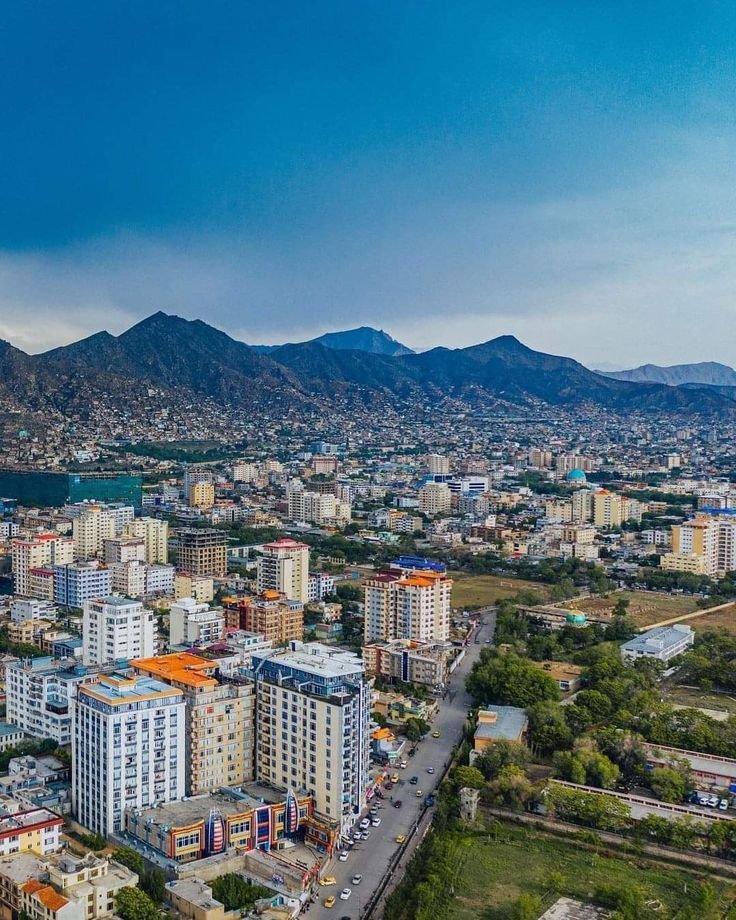
Travel Tips
Traveling to Afghanistan in 2025 offers a rare opportunity to explore a country with a rich cultural heritage, stunning landscapes, and welcoming people. However, it remains a destination that requires careful preparation, cultural sensitivity, and a clear understanding of safety considerations. This guide provides essential travel tips to help you navigate Afghanistan respectfully and securely.
Safety Advice
- Travel with a Local Guide
One of the most important safety measures is to travel with an experienced local guide or join an organized tour. Local guides are invaluable for navigating security checkpoints, obtaining necessary permits, and understanding the cultural and political landscape. They also help avoid restricted or dangerous areas and provide real-time advice on changing conditions. - Stay Informed and Vigilant
Security in Afghanistan varies by region and can change rapidly. Before and during your trip, monitor local news and official advisories. Avoid areas with ongoing conflict or instability, and always stay alert to your surroundings. Keep a low profile, avoid drawing unnecessary attention, and do not share your real-time location on social media. - Avoid Solo Travel and Nighttime Wandering
Solo travel is possible but challenging due to limited infrastructure and security concerns. It is safer to travel in groups and avoid walking alone, especially at night. Stick to well-known routes and avoid isolated places. - Respect Checkpoints and Authorities
You will encounter numerous security checkpoints. Always carry your passport, visa, and permits, and cooperate politely with security personnel. The Taliban authorities generally support tourism as it benefits the economy, but compliance with their rules is essential. - Avoid Prohibited Items
Do not bring drones, political materials, or any items that could be construed as sensitive. These are strictly forbidden and may lead to severe consequences. Also, avoid photographing government buildings, military installations, or people without explicit permission. - Prepare for Health and Environmental Challenges
Afghanistan’s terrain includes high altitudes and extreme temperatures. Prepare for altitude sickness if visiting mountainous regions, and carry essential medications. Drink bottled water and eat cautiously to avoid foodborne illnesses. Dust and pollution in urban areas can also affect sensitive travelers. - Money and Communication
International credit and debit cards are generally not accepted. Carry enough cash, preferably US dollars in large, crisp notes, to exchange locally. Keep emergency contact numbers handy, including your embassy (if available), local police, and medical facilities. - Landmines and Road Safety
Landmines and unexploded ordnance remain hazards outside urban areas. Stay on paved roads and official crossings, and never touch suspicious objects. Road conditions can be poor, and driving is often reckless, so avoid overland travel unless accompanied by vetted security.
Local Customs
- Dress Code
Afghanistan is a deeply conservative country, and modest dress is mandatory. Women must wear long dresses or abayas that cover their arms and legs, along with a headscarf covering their hair. Men should avoid shorts and sleeveless shirts, opting for long trousers and shirts with sleeves. - Respect Religious Practices
Islam is central to Afghan life. Respect prayer times by avoiding noisy or disruptive behavior near mosques. Public displays of affection are taboo and should be avoided. Alcohol is prohibited throughout the country. - Social Interactions
Hospitality is a cornerstone of Afghan culture. You may be invited to share tea or meals, which is a sign of friendship and respect. When eating, use your right hand, as the left is considered unclean. Always ask permission before photographing people, especially women, to respect their privacy and cultural norms. - Communication and Behavior
Avoid discussing politics or religion with strangers. Be polite and patient, and show respect to elders and religious figures. Avoid loud or confrontational behavior, which is frowned upon. When greeting, a nod or placing your hand on your heart is common, as physical contact between unrelated men and women is generally avoided. - Gender Interaction
Gender segregation is common in many public spaces. Men and women often have separate seating areas in restaurants and public transport. Women travelers should be particularly mindful of these norms and may benefit from traveling with a female companion or guide.
Language Basics
The two official languages of Afghanistan are Dari (a variety of Persian) and Pashto. English is not widely spoken outside major cities and tourist circles, so learning some basic phrases in Dari or Pashto will enhance your experience and help build rapport with locals.
Common Dari Phrases:
- Hello: Salam
- Thank you: Tashakur
- Yes: Bale
- No: Na
- Please: Lotfan
- Excuse me / Sorry: Bebakhshid
- How much?: Cheqadar?
- Where is…?: Kojast…?
- I don’t understand: Man nafahmidam
- Help!: Komak!
Common Pashto Phrases:
- Hello: As-salamu alaykum (also used in Dari)
- Thank you: Manana
- Yes: Ao
- No: Na
- Please: Mehrabani
- Excuse me / Sorry: Bakhshena
- How much?: Sanga da?
- Where is…?: Cherta de…?
- I don’t understand: Za na pohegam
- Help!: Madad!
Learning these basics will not only facilitate communication but also show respect and goodwill, which Afghans deeply appreciate.
Final Thoughts
Traveling to Afghanistan in 2025 requires thorough preparation, cultural respect, and vigilance. Prioritize safety by traveling with local guides, staying informed, and avoiding risky areas. Dress conservatively, respect religious and social customs, and be mindful of local etiquette. Basic knowledge of Dari or Pashto will enrich your interactions and help you navigate daily life more smoothly. With these travel tips, your journey to Afghanistan can be a safe, respectful, and deeply rewarding adventure into one of the world’s most fascinating and resilient cultures.

